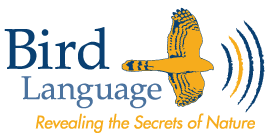During an early May morning in Maine, I was on a monthly conference call with some colleagues, occasionally multi-tasking on a few other projects, when I noticed that two robins outside my window (which was closed at the time) stopped moving.
I’m not talking a brief pause- instead, they were frozen in place. Not a muscle was moving.
Just a few minutes ago, they were hunting worms on the edge of the lawn. Now, two of them – one on the ground and one 5 feet up a witch hazel appeared immobilized. This caught my undivided attention.
Without thinking, I uttered something into the phone that made it sound like I was paying attention, then hit the mute button. At that moment, I observed a second feature of the frozen robins.
Both birds were intermittently opening their beaks – only about 1/3 of the way open – then closing them. It’s a “SEEEEEEET” alarm I said to the office manager. I put the handset on the desk and snuck out of the room quietly.
A thin, high-pitched “SEEEEEET” alarm from two frozen robins-who were both facing in the same direction – likely meant one thing: A dangerous raptor snuck in on them and was too close for comfort.
Using my mind’s eye to visualize the branches of the only large tree near the robins, a mid-sized American Beech, I realized going upstairs would give me a better view (and would likely not disturb the whole scene).
Sure enough, as I quietly and slowly walked toward the window (bird, especially raptors, can see into houses), I could see the robins, still frozen and still emitting their ventriloqual alarm.
I could also see the searching head and piercing eyes of a broad-winged hawk (a smaller buteo that can, and does, dispatch robins regularly in my neck of the woods), who was intently scanning the ground below for the robins that drew it in just a minute ago.
Without thinking, I decided to tap on the glass and see what happened. In a flash, the hawk left it’s perch, going away from the robins, who, within 20 seconds (I counted) began vocalizing their discontent for the hawk with harsh “TUT!” calls. It took those robins nearly two minutes to resume feeding nearby.
I was so excited about the whole story I just witnessed and took part in that I forgot my conference call. Upon my return, I saw that my colleagues were still all chatting away – apparently not even noticing my absence as I witnessed the near-death experience of a few of my neighbors.
Editor’s Note: Dan served as the science editor for the new book, What the Robin Knows: How Birds Reveal the Secrets of the Natural World. He also worked with Lang Elliot of NatureSound Studio to produce an audio companion to the book (go there to hear the “Seeee” alarm call of the robin!). The BirdLanguage.com team welcomes Dan as a contributor – keep a look out for more stories from him!
